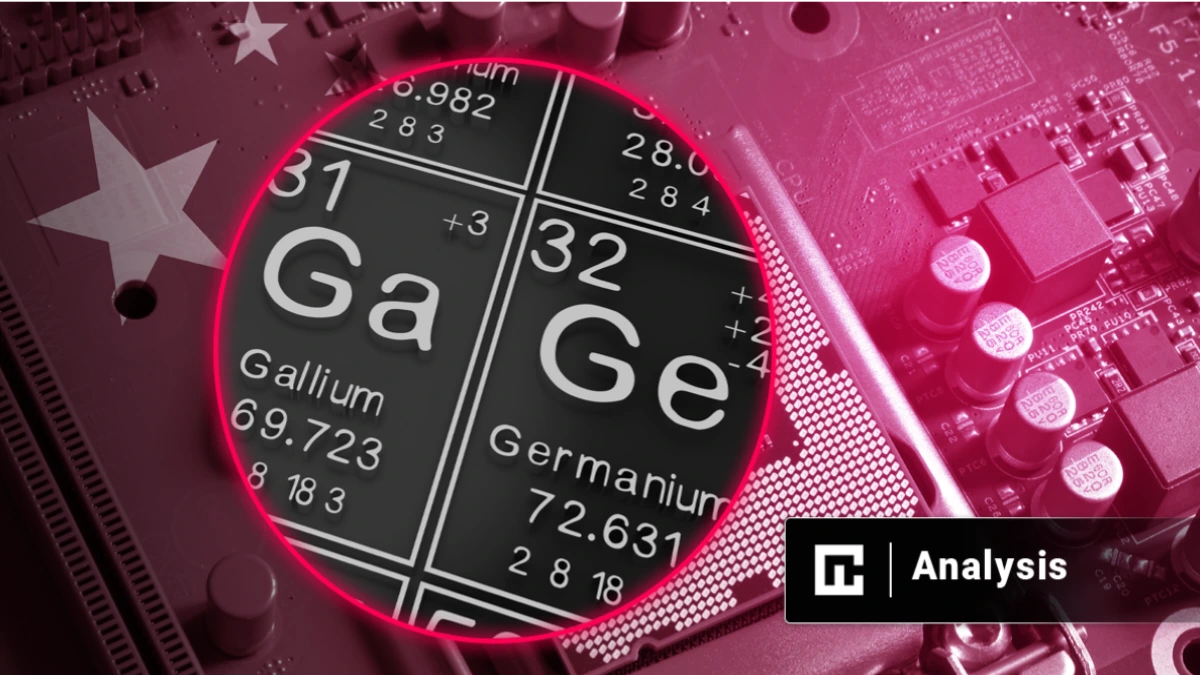Beijing — China has temporarily suspended its ban on exports of gallium, germanium and antimony to the United States, marking a notable de-escalation in the countries’ yearlong trade restrictions over critical minerals used in semiconductors and defense technologies.
The Ministry of Commerce announced Sunday that it would lift the restrictions on “dual use items” related to the three strategic materials, as well as certain super hard materials, effective immediately until Nov. 27, 2026.
The move also pauses strict end user checks on graphite exports, which were introduced last year amid growing trade friction between the two powers.
China, the world’s dominant producer of gallium and germanium key materials used in advanced chips, electric vehicles and telecommunications first introduced export licensing requirements in December 2024.
The restrictions were widely viewed as retaliation against US export curbs on high end semiconductors and chipmaking tools imposed under national security grounds.
At the time, the Chinese ministry framed the controls as a measure to “safeguard national security and public interest.” Washington, in turn, criticized the move as an attempt to leverage China’s dominance in the global minerals supply chain.
The latest suspension follows a gradual thaw in US China economic relations, highlighted by President Xi Jinping’s recent agreement with President Donald Trump to reduce tariffs and pause other punitive trade measures for one year.
“This suspension represents a pragmatic step to stabilize supply chains and improve diplomatic conditions,” said Chen Yulin, a trade policy expert at the Beijing Institute of International Affairs.
It is not a full reversal but a temporary easing designed to create room for negotiation. Analysts see the two year suspension as a tactical move by Beijing to project goodwill while retaining leverage.
Gallium and germanium are essential to the manufacturing of high performance chips, solar panels and defense equipment industries where the United States is trying to reduce reliance on Chinese sources.
“By lifting the export ban, China signals flexibility but also sets a clear timeline,” said Robert Jenkins, senior fellow at the Center for Strategic and International Studies in Washington.
The two year window gives both sides time to renegotiate technology controls and possibly define clearer rules for dual use materials.
Jenkins added that the move “may also be a strategic concession to encourage reciprocal action from Washington, such as easing restrictions on Chinese access to advanced chipmaking technologies.”
According to data from the US Geological Survey, China accounts for about 98% of global gallium production and more than 60% of germanium output.
These materials are considered critical for next generation semiconductors, infrared optics and satellite communication systems.
Before the 2024 export controls, global gallium prices had surged by more than 250% due to supply fears, while germanium prices climbed nearly 180%, according to the World Bureau of Metal Statistics.
Following China’s announcement this week, prices for both materials dipped slightly in early trading, signaling market optimism about renewed supply stability.
China’s export suspension also extends to antimony, a less discussed but strategically significant element used in batteries, flame retardants and military grade alloys. The United States currently imports over 80% of its antimony supply, primarily from China and Mexico.
“Any disruption in antimony or gallium supply directly affects the defense and green energy sectors,” said Mei Zhang, a Shanghai-based commodities analyst. “The temporary suspension should calm markets but doesn’t erase the underlying fragility of global supply chains.”
Chinese exporters welcomed the announcement, viewing it as a relief for an industry hit hard by bureaucratic delays and uncertainty.
“Many small suppliers were struggling with complex export licensing,” said Li Hao, who manages a materials trading firm in Guangzhou.
We had shipments stuck for months, and buyers in the US started looking elsewhere. This pause gives us breathing room. In the United States, manufacturers reliant on rare materials expressed cautious optimism.
“It’s good news for now,” said Karen Foster, operations director at Arizona Semiconductor Components. “But given the temporary nature of the suspension, we’ll still diversify sourcing in Japan and Europe. No one wants to be vulnerable again.”
The suspension aligns with broader signals of détente between the world’s two largest economies. On Friday, China also lifted export curbs on certain rare earth elements and lithium battery materials imposed in October, moves widely interpreted as precursors to a broader trade framework.
However, experts warn that the pause does not represent a full reset. “These materials are too strategically sensitive for either side to fully liberalize,” said Jenkins. “Expect both governments to use regulatory tools to influence trade flows even after 2026.”
Beijing’s commerce ministry stated that the decision would remain “under review” and could be reversed “based on changes in the international trade environment or national interests.”
China’s suspension of the export ban on gallium, germanium and antimony marks a tentative step toward easing trade tensions with the United States.
While the measure offers short term relief to industries on both sides of the Pacific, it remains temporary subject to the fragile balance of geopolitical and economic interests defining US China relations.
For now, global markets are responding positively, but with cautious awareness that this reprieve could end as quickly as it began.

